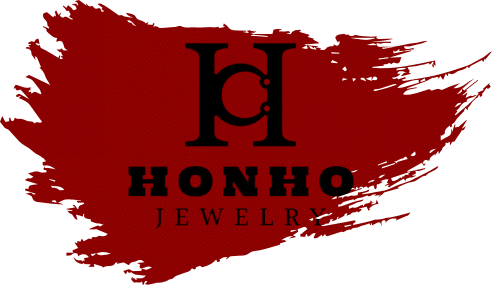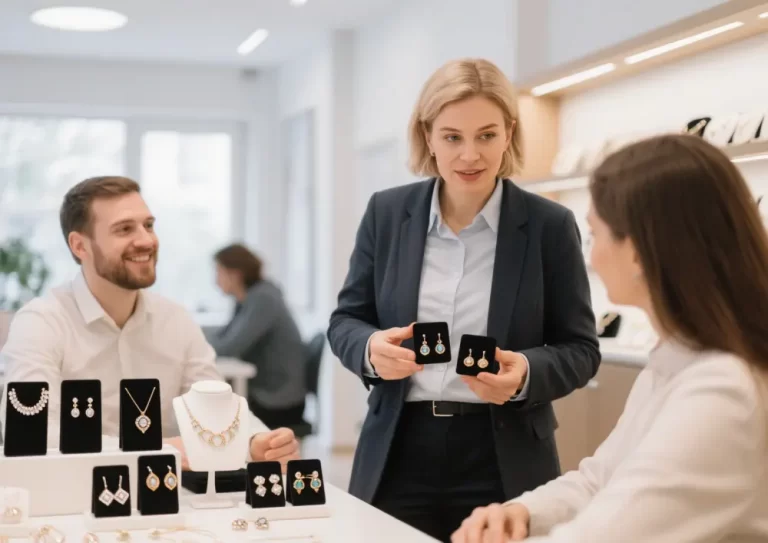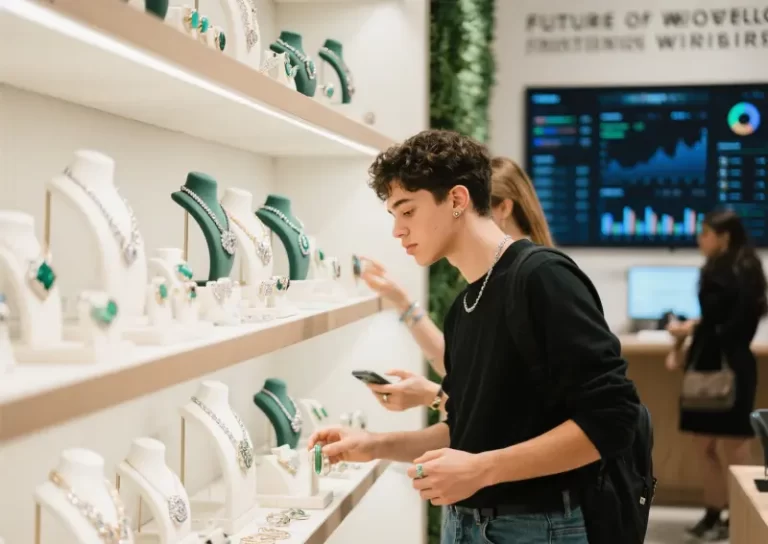
What Does S925 Mean on Jewelry? Understanding Its Significance and Quality
Key Takeaways
- S925 stands for 92.5% pure silver, assuring quality and authenticity in jewelry across the globe.
- The inclusion of metals such as copper to S925 silver enhances its durability, making it suitable for jewelry and less likely to scratch or bend.
- Seek out the S925 stamp, evaluate artistry, trust respected vendors — steer clear of fakes and shoddy goods.
- While tarnishing is a natural process for S925 silver, regular cleaning and proper storage can help maintain the jewelry’s appearance.
- Both S925 and 925 refer to the same silver purity, but S925 is more specific to sterling silver and is popular worldwide.
- If you stay tuned to market trends and opt for artisan or ethically sourced S925 jewelry, you’ll maximize your satisfaction as well as your value.
S925 on jewelry means the piece is made of sterling silver that is 92.5% pure silver and 7.5% other metals, often copper. Understanding What Does S925 Mean on Jewelry helps consumers make informed choices.
This stamp allows consumers to understand the silver composition, which influences price, durability, and maintenance requirements.
Sterling silver is popular for rings, necklaces and earrings as it is durable and maintains its luster.
To assist you in identifying authentic sterling silver and maintaining it, the majority of the text details what to be aware of when choosing silver jewelry.
What Does S925 Mean?
S925 is a jewelry mark indicating that the item is crafted with 92.5% fine silver, which is essential in the silver jewelry market. The other 7.5% is typically copper, enhancing the durability of the silver piece. This genuine stamp serves as an international quality standard for sterling silver jewellery and is a key factor in understanding What Does S925 Mean on Jewelry, helping buyers select authentic, durable goods and avoid counterfeit silver.
1. The Purity Standard
Sterling silver’s standard of 92.5% silver is known as the S925 mark. This combination provides each item a shiny, attractive appearance while rendering it durable for daily wearing.
The remaining 7.5% is usually copper, chosen for its durability. Pure silver (999) is too soft and bends or scratches fast, so it’s rarely used for rings, earrings, or necklaces.
This S925 standard is important as it distinguishes real sterling silver from lower quality metals and prevents purchasers from having to settle for tacky, plated alternatives.
2. The Alloy Composition
Sterling silver is an alloy, mostly silver with a bit of copper thrown in. It’s this mixture that explains why S925 jewelry is durable, yet malleable for intricate designs.
By mixing in copper, the jewelry stands up stronger to daily use, allowing artisans to forge both delicate chains and heavy pendants. Other designs may employ a bit of zinc or other metals, but copper is most typical.
If a piece isn’t the right blend, it can tarnish quicker or lose form. When it comes to jewelry, check out what metals comprise the alloy—it makes a difference in both look and wear.
3. The “S” Prefix
The S in S925 means Sterling, which means it fulfills the purity level. It’s a method for craftsmen to demonstrate the jewelry isn’t just any silver, but genuine sterling.
It’s just a variation on a bigger mark system, such as “925” or “.925.” These aid purchasers to ascertain the actual silver weight.
If you see the S925 stamp on jewelry from a trusted brand like HonHo Jewelry Manufacturer, you can trust the piece meets the global standard for sterling silver. Identifying the S prefix can assist you in selecting authentic silver and steer clear of counterfeits.
4. The Hallmark’s Role
Hallmarks are there to certify the jewelry’s composition. S925 is trusted all over the world.
They help buyers steer clear of fake silver. Always check for this mark first.
5. The Global Recognition
S925 is not only in one region, it is accepted in a lot of countries. It adds trust and value to any jewelry piece.
With S925, you have that as the standard of quality everywhere. Look for S925 for peace of mind.
S925 Versus 925 Silver
Both S925 and 925 mark sterling silver, indicating the jewelry is composed of 92.5% pure silver alloyed with 7.5% other metal, typically copper. This alloy is the world standard for quality silver jewelry, being used because pure silver is too soft to be worn on a daily basis.
The primary distinction is simply marking and context.
|
Marking |
Meaning |
Typical Alloy |
Usage Context |
|
|---|---|---|---|---|
|
925 |
Sterling Silver |
92.5% |
Copper |
Universal, older, broad |
|
S925 |
Sterling Silver |
92.5% |
Copper |
Modern, often higher craftsmanship |
S925 tells you the piece is sterling silver, due to the “S” for “Sterling.” Both indicate the same silver purity, but S925 is more specific and is commonly used by manufacturers who wish to emphasize quality. Understanding these distinctions enables consumers to shop wisely, steer clear of confusion, and identify fine jewelry with confidence.
A Common Confusion
A lot of buyers mix up S925 and 925 silver. Both marks represent the same silver content–92.5% silver, 7.5% alloy, most often copper. The secret is that S925 is just a clearer way of saying “Sterling Silver.
All this confusion can cause you to wonder if S925 is better or 925 is lower grade. The fact is, they are both premium sterling silver and the purity remains the same. Certain jewelers or brands may stamp S925 to emphasize artisan craftsmanship or quality processes, but the composition remains unchanged.
Inquiring about these marks when purchasing jewelry cuts through any confusion and makes sure the piece lives up to its description.
The Practical Difference
In practice, S925 and 925 jewelry are equally durable and stylish. S925 stamping, it seems, can be employed by craftsmen or producers who simply desire to display pride in their craft, such as HonHo Jewelry Manufacturer, a reputable worldwide supplier of exquisite sterling silver pieces and rigorous quality controls.
This additional attention can translate to superior finishes and more dependable materials, which count for everyday use. Knowing which mark is on a piece can give buyers more confidence in the maker.
S925-marked pieces frequently originate from ethical suppliers who take pride in their candor. This knowledge simplifies the shopping process for consumers, allowing them to select confidently and shop gladly. If you’re looking for additional peace of mind, look for S925 items and shop trusted brands or artisans.
Which Is Authentic?
Authenticity means it’s not plated or misrepresented; it’s real sterling silver. Both S925 and 925 are legitimate if the piece is indeed the 92.5% silver standard.
S925 gives a little more peace of mind, as it’s frequently utilized by brands that emphasize consistent quality. Always verify permanent stamps, and purchase from jewelers who offer information or certification.
Testing with a magnet, asking for an acid or XRF test, or dealing with a reputable seller are wise moves. Please always read product descriptions and verify with the seller.
Certificates and good packaging help prove authenticity.
Assess S925 Quality

S925 silver jewelry has always been distinguished by its perfect combination of purity and durability. The ‘S925’ stamp signifies jewelry crafted using 92.5% pure silver and 7.5% other metals, predominantly copper. Consumers can verify by searching for this stamp, testing the heft and examining for natural tarnish.
Good quality S925 is heavier than fakes and will tarnish like real silver should. Examining the workmanship, verifying against counterfeit marks, and taking into account the jeweler’s reliability aid in steering clear of sub-par or imitation products.
-
Look for the S925 or 925 stamp to verify the silver content. Both hallmarks indicate the same purity.
-
Try the weight of the piece—real S925 has a heavier feel to it than counterfeit or plated designs.
-
Look for tarnish. True S925 silver oxidizes with air and will become dull over time. Fakes tend to remain glossy.
-
INSPECT THE CRAFTSMANSHIP AND DESIGN for nice soldering, smooth edges and tight settings. Low quality could mean it’s not real S925.
-
Investigate the jeweler’s rep. Reputable sellers are not going to sell you counterfeit or poor quality goods.
-
Steer clear of bargains that appear to be unbelievable. Rock bottom prices are a red flag.
-
Beware of counterfeit hallmarks. Validity can be verified with experts or reputable sellers.
Durability
S925 silver is very durable. Copper, what is added, makes the alloy much stronger than silver, which is very soft and deforms easily. This mix is what provides S925 the strength required to withstand everyday use.
It stands up to everyday bumps and bruises without denting or snapping. Most choose S925 jewelry if they desire items that endure for years with minimal maintenance.
Hypoallergenic Properties
A lot of sensitive-skin types love S925 silver due to its frequent hypoallergenic qualities. Additionally, most S925 jewelry isn’t nickel laden, the primary culprit in skin reactions to jewelry, so S925 is safer for most wearers.
If you’re prone to rashes from metal jewelry, S925 is usually a safer choice. Still, it’s savvy to try the jewelry on a small patch of skin to make sure there’s no irritation before wearing it for a full day.
Value Proposition
S925 offers a great combination of quality and affordability. It really depends on the design, the brand and craftsmanship. Quality S925 is a great investment for people who want pieces that shine and stand the test of time, without paying a premium for pure silver or gold.
Too many buyers discover long term satisfaction since the jewelry stands up and looks timeless in age.
The Inevitable Tarnish
Tarnishing is inevitable on silver jewelry, including quality sterling silver pieces stamped with an S925 mark. This occurs when genuine silver reacts with air and moisture, developing that characteristic layer of dullness. Although this affects the jewelry’s appearance, it does not diminish the quality or durability of sterling silver. Tarnish is common with silver and to be anticipated — not indicative of poor workmanship or counterfeit silver products.
Why It Happens
Tarnishing begins as a chemical reaction. As soon as silver comes into contact with air, a coating of silver oxide is produced. If sulfur is touching it—either in the air, or from your skin—it can react with the silver and form silver sulfide, which is dark and visible.
Sulfur, humidity, and even pollution accelerate this process. Lots of everyday stuff — perfume, lotions, sweat, even food — can expose your silver jewelry to these. Inferior silver, or thinly-gilded items of poorer quality are more liable to tarnish promptly owing to the reduced protection bestowed on the underlying metal.
Some individuals may experience their jewelry tarnishing more rapidly than others due to their skin’s oils or the climate in which they live. Knowing your tarnish makes owners take better care of their jewels. Routine polishing does wonders.
Prevention
- Store S925 jewelry in dry, airtight containers.
- Protect pieces between wears with anti-tarnish pouches or cloths.
- Take off jewelry before swimming, showering, or exercising.
- Avoid contact with perfumes, lotions, and cleaning products.
- Wipe jewelry with a soft cloth after each use to eliminate oils and moisture.
Using anti-tarnish pouches and cloths is an easy, inexpensive way to protect your silver jewelry. These options delay tarnish by cutting off oxygen and moisture, while steering clear of harsh chemicals or water helps maintain the quality sterling silver and its natural silver color.
Restoration
- Wipe S925 jewelry with silver polishing cloth to remove tarnish.
- Soak segments in soft soap and warm water, dry thoroughly.
- For resistant tarnish, rub with a baking soda and water paste.
- Consider professional cleaning for valuable or heavily tarnished items.
Polishing cloths are convenient tools that can create a huge impact on the appearance of quality sterling silver jewelry. For fragile or premium silver pieces, professional cleaning is a safe bet. Companies like HonHo Jewelry Manufacturer not only provide quality jewelry but also valuable advice for maintaining your silver jewelry materials in top condition, ensuring their beauty lasts longer.
How to Verify Authenticity

Verifying that S925 jewelry is genuine sterling silver is crucial for quality sterling silver purchases. The following steps provide a clear process for checking if a silver piece is genuine S925 silver.
-
Verify that there is a hallmark or stamp like s925, 925 or .925 on it. This stamp is the fast indicator of silver standard, demonstrating the item is 92.5% silver.
-
Do a couple of simple verification tests for the metal. These tests can help you identify fakes prior to purchasing.
-
Pursue an expert opinion, particularly for valuable or vintage jewelry, to garner expert advice and prevent expensive errors.
-
Check the price. If it sounds too low for S925 silver, tread carefully. Fakes tend to be priced low to tempt purchasers.
The Stamp
The S925 stamp is the principal indication that a piece is sterling silver. This stamp, which can hide in tiny, behind-the-scenes locations like the tuck of a pendant or the interior of a ring band, indicates the piece carries 92.5% silver alloyed with 7.5% copper.
The ”S” means ”Sterling”, and differentiates it from the other grades, like 800, or 900, which used less silver. Trustworthy jewelers will always stamp authentic silver pieces. So when shopping, seek out these hallmarks, s925, 925 or .925, as your initial verification. Missing, unclear or odd markings are red flags.
Physical Tests
There are some simple tests you can perform to distinguish genuine S925 silver from counterfeit products. True silver is not magnetic so a magnet will not adhere to it. If a piece sticks to the magnet it probably contains other metals.
Another test is rubbing the jewelry with a soft white cloth as real silver leaves faint black marks of oxidation. This is typical and does not damage the piece. Give these authenticity checks a whirl prior to purchase, particularly when browsing markets or online.
These tests are easy but not definitive. They offer additional confidence but should be combined with other techniques, such as looking for the S925 stamp and taking price into consideration.
Professional Appraisal
For more costly or antiquated items, having them appraised by experts adds a bit more confidence. Experienced appraisers employ special equipment and assays to verify both metal content and the value of the jewelry.
They’re able to detect counterfeits or cheap alloy that quick snooping can overlook. This is great for buyers seeking assurance or collectors interested in insuring their pieces. Professional advice can help you understand your silver’s long-term value, which is handy if you intend on reselling or passing it down.
Diligence Before Purchase
Watch out for prices that seem too low, as they may indicate counterfeit silver. Always check for clear, proper hallmarks and genuine silver exposure. Do not skip physical tests if possible.
S925 in Today’s Market

S925, or stamped 925, signifies the item is crafted from sterling silver—92.5% pure silver blended predominantly with copper. It’s this blend of strength and beauty that has made S925 a staple in jewelry. The S925 mark provides transparent quality assurance and aids consumers in identifying their purchase.
Today, S925 silver maintains a favored niche in jewelry circles, due to its balance between resiliency, price, and elegance. Buyers want value, but they want brands that care about ethics and the planet.
|
Trend |
Description |
Consumer Preference |
|---|---|---|
|
Demand for S925 |
Steady growth due to durability and price |
High |
|
Sustainable sourcing |
More buyers want eco-friendly options |
Rising |
|
Transparency in marking |
S925 stamps build trust and show metal content |
Important |
|
Artisan jewelry |
Unique, handcrafted S925 pieces gain popularity |
Growing |
|
Fast fashion |
Mass-made S925 jewelry offers affordability, sometimes at quality cost |
Mixed |
Fast Fashion
Fast fashion keeps S925 easy to shop and cheap, allowing people to experiment with trends without the risk. It has its compromises. Mass-produced S925 jewelry usually implies shortcuts.
These can impact the weight, feel, and even purity of the silver as some are plated or blended with lower grade metals. When jewelry is produced fast and inexpensive, it’s simpler for knock-offs or subpar items to find their way in, even if they’re stamped ‘S925.’
Backing brands with an ethical and sustainable focus tackles these issues. Companies like HonHo Jewelry Manufacturer (https://www.honhojewelry.com/) set a good example by sticking to strict quality checks and using eco-friendly materials.
Choosing quality over quantity translates into less, but better pieces that endure and remain beautiful.
Artisan Jewelry
Artisan jewelry has made a comeback, with S925 as a darling metal for boutique makers. They are craftsmen who pride themselves on meticulously handcrafting every piece using only the finest sterling silver.
Most artisan S925 jewelry is one-of-a-kind or small-batch, so customers are receiving something distinctive, not just another mass-produced ring or pendant. Seeking out artisan fairs, Etsy-type craft sites, or boutique stores can offer unique S925 discoveries.
Every piece has its handmade tale, frequently marked with “925”, “S925” or “.925”, reflecting genuine silver and craftsmanship.
Consumer Perception
S925’s perspective has evolved. More buyers than ever before are aware of what that stamp stands for and want authentic, quality silver. It’s this increasing consumer awareness that forces brands to be transparent about their materials and processes.
Buyers are more apt to look for real stamps, inquire about sourcing, and track down reputable dealers. By sharing our honest experiences online we all contribute to being able to identify the real S925 items and avoid cheap or fake S925 jewelry.
Conclusion
S925 marks stand for genuine sterling silver. That stamp indicates the piece contains 92.5% pure silver, alloyed with other metals for durability. Shoppers see S925 on rings, chains and earrings.
Silver can begin to tarnish or darken with wear, but a gentle cloth or cleaner restores luster. We always look for the stamp and shop trusted stores. Both online and local shops retail S925, though prices vary with weight and design.
To shop savvy, know how to identify genuine stamps and avoid bargains that seem too perfect. By remembering these tips you’ll be able to locate silver that lasts. Looking for additional advice or assistance with silver care? Contact for consultation or request a quick primer.
Frequently Asked Questions
What does S925 mean on jewelry?
S925 stands for sterling silver, which consists of 92.5 percent pure silver and 7.5 percent other metals, typically copper, ensuring quality sterling silver.
Is S925 real silver?
Yes, S925 is genuine silver, representing the sterling silver standard of 92.5% quality sterling silver.
How can I tell if S925 jewelry is authentic?
When purchasing silver jewelry, look for the S925 stamp on the pieces. You can also test with a magnet since genuine silver is not magnetic or consult a reputable jeweler for confirmation.
Does S925 jewelry tarnish over time?
Yes, genuine silver S925 jewelry can tarnish due to air and moisture affecting the copper content, but tarnish can be removed.
Is S925 better than pure silver?
S925 sterling silver is stronger and more durable than pure silver, which is soft and bends easily, making it an ideal choice for daily jewelry purchases.
Can people with sensitive skin wear S925 jewelry?
S925 jewelry is fine for the vast majority of people. If you’re copper sensitive, better go hypo.
Why is S925 jewelry popular in the global market?
S925 sterling silver jewelry offers an ideal blend of beauty, durability, and affordability, making it a sought-after choice in the jewelry market due to its quality sterling silver content.



